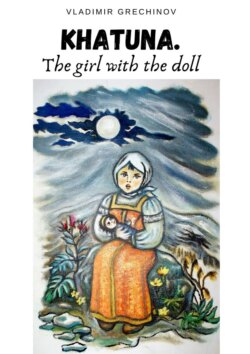Читать книгу KHATUNA. THE GIRL WITH THE DOLL - Владимир Гречинов - Страница 2
PART I
CHAPTER 1. PETROVSKOYE VILLAGE
ОглавлениеThis terrible story happened at the end of the XIX century in the village of Petrovskoye, Stavropol province, in the south of the vast Russian Empire. This village was lost in a steppe area, surrounded by mountains and hills with streams and beams overgrown with dense forest. Mostly Cossacks, gypsies and other newcomers who arrived here long ago in search of refuge and a better life lived in Petrovskoye. More than a dozen years passed before the village grew: adobe huts covered with straw and dry reeds, with small windows and a necessarily carved porch appeared here and there, gradually forming long, though not very slender strings. Over time, they grew into wide streets, buried in the lush greenery of trees and shrubs that planted caring villagers around their huts There were no special attractions in Petrovskoye, except for a large white-stone church – the ringing of its bells was usually heard for many miles, and a colorful market, which everyone here called in the southern manner – the bazaar.
On weekdays, the local people were busy with something: some with hard peasant labor in the field, and some with no less light housework, looking after the children, whom there was a lot of in the local families, and caring for the farm. On Sundays and holidays, people put on their best clothes and in the morning went first to the church, and then to the bazaar.
The trading rows were not only a meeting place for relatives and acquaintances – many came here, so to speak, to show themselves and to look at others. This was especially true of girls: local beauties at a conversation seemed to accidentally boast of new clothes to each other, while they loudly laughed and glanced furtively at the handsome lads walking in the bazaar. Here, boys scurried around in dirty tatters everywhere: some tried to earn some money honestly, attempting to bring something to sellers or visitors to the bazaar, while others simply looked for something to steal from inattentive and slow-moving buyers.
The bazaar itself was a square with the trading rows, where they sold everything what was needed. Eh, what wasn’t there – fruits, vegetables, milk, eggs, meat, fish, hay, firewood, coal, clothes… They traded mainly from carts and wagons, while some placed their goods right on the ground.
The wealthy merchants and other successful businessmen had their own covered shops with large signs on which the names of the artels1 were flaunted. Such rich men allowed themselves to hire salespeople and barkers who loudly bellowed at the whole bazaar.
The owners themselves spent almost the entire market day in the immediately located inn, on the verandah of which they gathered at a large long table with a samovar.2 Being business people, merchants argued about something noisily, made bets and big deals by their standards. Meanwhile, lackeys rushed to the table with sturgeons, dumplings, overseas fruits and other dishes. Finished with business, the merchants celebrated, had fun, but sometimes still looked at their pocket gold watch and watched hired salesmen, giving them instructions through the clerk or through the boy footman, who hung around the Inn.
In a word, life in the village was boiling on Sunday market day. It was a kind of holiday, after which the streets were empty, and on the morning of the next day the week of heavy peasant workdays began again…
1
Artel was any of various cooperative associations in the Russian Empire.
2
Samovar is a big metal container used in Russia to boil water for making tea.
